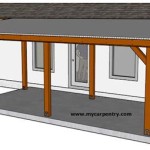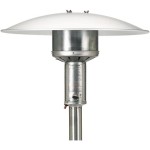How to Repair Patio Pavers: A Comprehensive Guide
Patio pavers, when properly installed and maintained, offer durable and aesthetically pleasing surfaces for outdoor living spaces. However, exposure to the elements, heavy foot traffic, and underlying structural issues can lead to damage, requiring repair to restore the paver patio to its original condition and prevent further deterioration. This article provides a detailed guide on how to effectively repair patio pavers, covering common problems, necessary tools and materials, and step-by-step instructions for various repair techniques.
Before embarking on any paver repair project, a thorough assessment of the damage is crucial. Identifying the root cause of the problem will ensure that the repairs are not merely cosmetic but address the underlying issues preventing recurrence. Common problems include individual paver cracking or chipping, uneven settling, weed growth between pavers, and polymeric sand erosion.
Identifying Common Paver Problems
Cracked or chipped pavers are typically the result of excessive weight, impact, or freeze-thaw cycles. Identifying the pattern and extent of the damage helps determine the appropriate repair strategy. A single cracked paver might simply need replacement, while widespread chipping could indicate a lower-quality paver material or the need for sealing.
Uneven settling of pavers suggests issues with the base underneath. Improper compaction, inadequate drainage, or soil erosion can all contribute to pavers sinking or shifting. Addressing the underlying base is paramount to preventing future settling. This often involves removing affected pavers, adjusting the base material, and reinstalling the pavers.
Weed growth between pavers not only detracts from the patio's aesthetic appeal but can also compromise the paver installation by displacing polymeric sand and creating pathways for water infiltration. While routine weeding helps, persistent weed growth often indicates a breakdown of the joint stabilization material or inadequate drainage around the patio edges. Addressing the source of moisture and properly sealing the joints can mitigate weed problems.
Polymeric sand erosion occurs when the binding agents within the sand are washed away due to heavy rain, improper drainage, or inadequate initial application. This results in loose sand, allowing pavers to shift and weeds to grow. Replenishing and properly compacting the polymeric sand is essential for maintaining joint stability.
Essential Tools and Materials
Successful paver repair requires a specific set of tools and materials. Having these items readily available will streamline the repair process and ensure professional-looking results. The necessary tools include:
- Rubber mallet: For gently leveling and setting pavers.
- Chisel and hammer: For removing damaged pavers or breaking them into smaller pieces for easier removal.
- Shovel and rake: For moving and leveling base materials.
- Hand tamper or plate compactor: For compacting the base material and polymeric sand.
- Level: For ensuring pavers are properly aligned and level.
- Measuring tape: For accurate measurements when cutting pavers.
- Utility knife: For cutting polymeric sand bags.
- Broom: For sweeping sand and debris.
- Push broom: For working the polymeric sand into the paver joints.
- Garden hose with a fine spray nozzle: For wetting the polymeric sand.
- Wheelbarrow: For transporting materials.
- Safety glasses and gloves: For personal protection.
The materials needed depend on the specific type of repair being undertaken. Common materials include:
- Replacement pavers: Matching the existing pavers in size, color, and texture.
- Base material (gravel or crushed stone): For rebuilding or leveling the paver base.
- Sand: For leveling pavers and filling minor gaps.
- Polymeric sand: For stabilizing paver joints and preventing weed growth.
- Paver sealer: For protecting pavers from stains and weathering (optional).
Step-by-Step Repair Procedures
Once the problem has been identified and the necessary tools and materials gathered, the repair process can begin. The following sections outline step-by-step procedures for common paver repair scenarios.
Replacing Damaged Pavers
Replacing cracked, chipped, or severely stained pavers is a straightforward process. The first step involves removing the damaged paver. This can be accomplished by using a chisel and hammer to break the paver into smaller pieces, making it easier to lift out. Carefully avoid damaging the surrounding pavers during this process.
Once the damaged paver is removed, inspect the underlying base. If the base is uneven or compacted, add or remove sand as needed to create a level surface. Use a hand tamper to compact the sand and ensure it is firm.
Place the replacement paver into the opening and gently tap it into place with a rubber mallet. Ensure the paver is level with the surrounding pavers. If necessary, add or remove sand underneath the paver to achieve the correct level. Use a level to verify the alignment.
Finally, sweep polymeric sand into the joints around the replacement paver. Compact the sand with a hand tamper or by sweeping it firmly with a broom. Lightly mist the area with water from a garden hose, following the manufacturer’s instructions for the polymeric sand. This activates the binding agents in the sand, creating a stable joint.
Correcting Uneven Pavers
Addressing uneven pavers requires a more extensive approach. The first step involves removing the affected pavers. Using a chisel and hammer, carefully lift the pavers surrounding the uneven area. Number the pavers as they are removed to ensure they can be reinstalled in the correct order.
Once the pavers are removed, inspect the base material. If the base is uneven, add or remove gravel or crushed stone as needed to create a level surface. Use a shovel and rake to distribute the base material evenly. Compact the base material using a hand tamper or plate compactor. Ensure the base is well-compacted to prevent future settling.
Add a layer of sand over the compacted base material. Use a rake to level the sand to a consistent depth. The depth of the sand layer will depend on the thickness of the pavers. Compact the sand with a hand tamper. Check the level of the sand to ensure it is even across the entire area.
Reinstall the pavers in their original order, using the numbers assigned during removal as a guide. Gently tap each paver into place with a rubber mallet. Ensure the pavers are level with each other and with the surrounding pavers. Use a level to verify the alignment.
Sweep polymeric sand into the joints between the pavers. Compact the sand with a hand tamper or by sweeping it firmly with a broom. Lightly mist the area with water from a garden hose, following the manufacturer’s instructions for the polymeric sand. This activates the binding agents in the sand, creating a stable joint.
Addressing Weed Growth
Controlling weed growth requires a multi-pronged approach. Begin by removing all existing weeds from between the pavers. A weeding tool or a utility knife can be used to extract the weeds, ensuring the root systems are removed as well.
After removing the weeds, thoroughly clean the paver joints. A pressure washer can be used to remove loose sand, dirt, and debris. However, exercise caution when using a pressure washer, as excessive pressure can damage the pavers or erode the joint material.
Once the joints are clean and dry, apply a weed killer specifically designed for paver patios. Follow the manufacturer’s instructions carefully. Avoid using weed killers that contain chemicals that could stain or damage the pavers. Allow the weed killer to dry completely before proceeding.
Sweep polymeric sand into the joints between the pavers. Compact the sand with a hand tamper or by sweeping it firmly with a broom. Lightly mist the area with water from a garden hose, following the manufacturer’s instructions for the polymeric sand. This activates the binding agents in the sand, creating a stable joint and preventing future weed growth.
Repairing Polymeric Sand Erosion
Addressing polymeric sand erosion involves replenishing the lost sand and ensuring proper compaction and activation. Begin by thoroughly cleaning the paver joints. Remove any loose sand, dirt, or debris. A pressure washer can be used, but caution should be exercised to avoid further erosion.
Allow the paver joints to dry completely. This is essential for the polymeric sand to properly bind. Sweep new polymeric sand into the joints, filling them completely. Compact the sand with a hand tamper or by sweeping it firmly with a broom.
Lightly mist the area with water from a garden hose, following the manufacturer’s instructions for the polymeric sand. This activates the binding agents in the sand. Avoid overwatering, as this can wash away the sand. Allow the polymeric sand to cure completely. The curing time will vary depending on the product and the weather conditions.
After the polymeric sand has cured, inspect the paver joints to ensure they are completely filled. If necessary, add more polymeric sand and repeat the activation process. Consider applying a paver sealer to further protect the polymeric sand from erosion.
By following these detailed instructions, homeowners can effectively repair common paver patio problems, extending the lifespan and enhancing the aesthetic appeal of their outdoor living spaces. Regular maintenance, including periodic cleaning and reapplication of polymeric sand, will help prevent future damage and ensure the longevity of the paver patio.

How To Fix Uneven Patio Pavers

Quick Easy Patio Paver Repair Step By Guide

How To Repair Sinking Patio Pavers Western Interlock

Raise Sunken Patio Pavers

How To Repair Sinking Patio Pavers Splendour In Stone

How To Fix Sunken Patio Pavers Family Handyman

Paver Restoration Breathe New Life Into Your Old Patio Or Walkway

Patio Paver Restoration Diy Step By How To Easy

How To Repair Sinking Patio Pavers Western Interlock

How To Fix Sunken Patio Pavers Family Handyman
Related Posts








